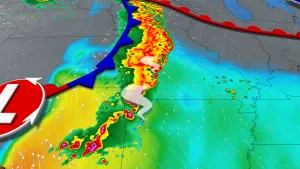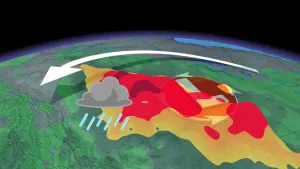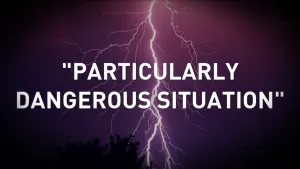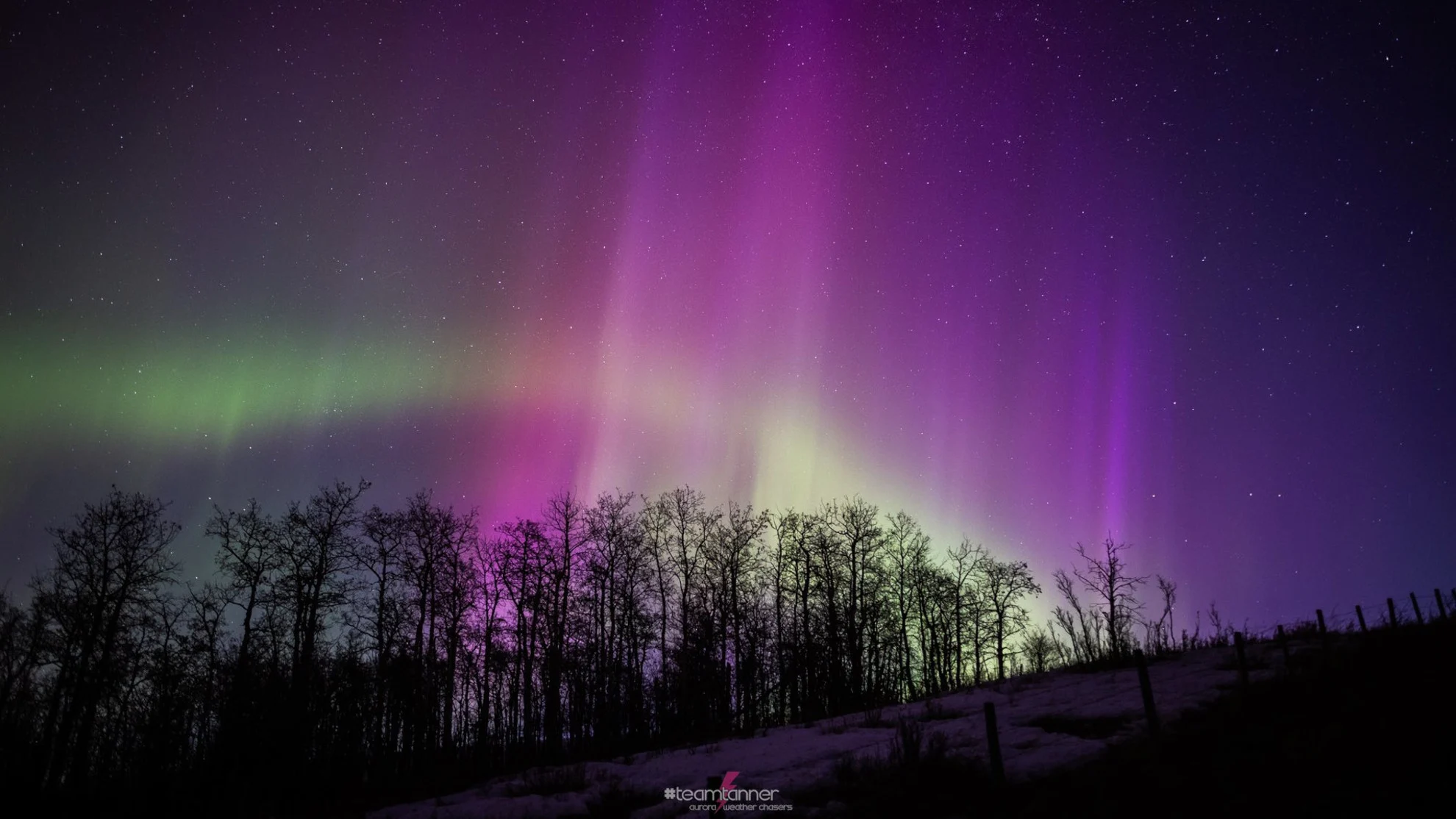
The Northern Lights may still shine across Canada tonight
After an absolutely amazing display of the Aurora Borealis stretched across Canada Thursday night, the Northern Lights may return tonight.
If you have clear skies tonight, look up! You could see the Aurora Borealis shining in the sky!
The Sun has been putting on some amazing displays for us lately, from the solar polar vortex to the immense plasma tornado.
Now, due to the effects of an immense coronal hole facing towards Earth, a bright display of the Northern Lights is expected across Canada overnight on Thursday night into Friday morning.
This coronal hole is essentially a gigantic gap in the solar atmosphere, which lies exposed to space due to an opening in the Sun's magnetic fields. While the solar wind flows like a calm breeze from other regions of the Sun, this gap emits a blustering gale by comparison.

On the left, this view from NASA's Solar Dynamics Observatory highlights the Sun's atmosphere (the corona), and the numerous magnetic fields looping out from the solar surface. Near the south pole is an immense dark region (a coronal hole), opened up by a gap in the magnetic fields. On the right, a simulation from NOAA's WSA-ENLIL model shows the fast and slow regions of the solar wind, with Earth currently in the middle of a 'blustery' flow known as a Coronal Hole High Speed Stream (CH HSS). Credit: NASA SDO/NOAA SWPC
As this 'blustery' solar wind sweeps past Earth, the fast flow of charged solar particles is expected to cause a disturbance in the planet's geomagnetic field.
On Wednesday, NOAA's Space Weather Prediction Center issued a Geomagnetic Storm Watch for March 23-25, forecasting a G2 (moderate) geomagnetic storm for overnight Thursday night, and a G1 (minor) geomagnetic storm for Friday night.
Update, Thursday 9 p.m. EDT: NOAA SWPC has upgraded their Geomagnetic Storm Watch. Due to the passage of a coronal mass ejection, geomagnetic conditions jumped to G3 (strong) levels for a short time Thursday morning.
"Additional isolated G3 periods are probable for the remainder of 23 March and into the early morning and overnight hours of 23-24 March (EDT)," they stated in an update posted Thursday evening.
From G1-G2 (minor to moderate) storm levels are expected, otherwise, throughout Thursday night, as well as Friday night into Saturday morning. There also remains the possibility that geomagnetic storms could persist into the weekend.
Update, Friday 10 a.m. EDT: Remarkably, geomagnetic activity reached G4 (severe) levels overnight, sparking incredible displays of the Northern Lights across many parts of Canada.
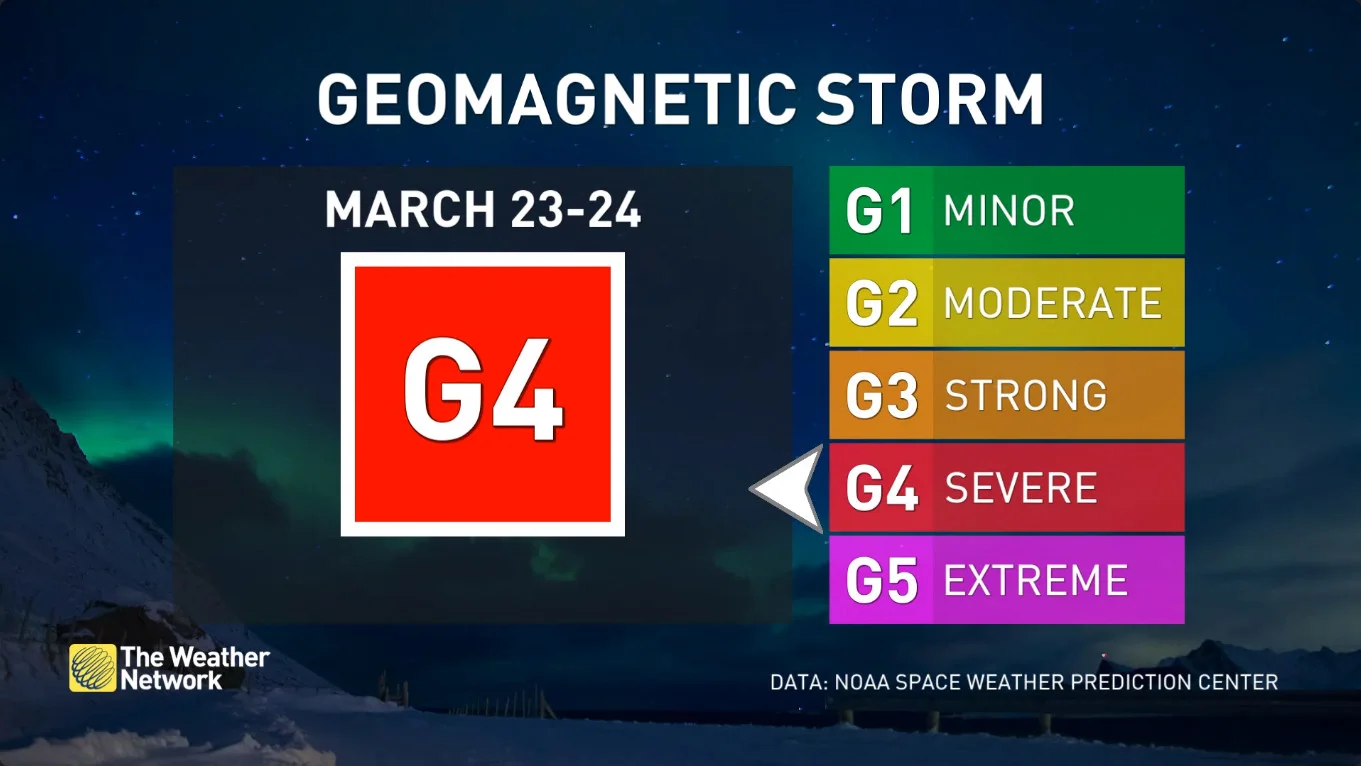
In a rare event, the auroras even stretched down into southwestern Ontario, although they were not easily spotted with the unaided eye.
Weather Network stormhunter Mark Robinson caught the scene above from just north of Guelph.
The view from farther west overnight was even more amazing, as shown in these images taken by Tree and Dar Tanner in central Alberta.
The show may continue for Friday night, as well, although it's unlikely we'll see anything as spectacular as what was on display Thursday night.
NOAA SWPC is forecasting up to G2 (moderate) geomagnetic storm levels during the day on Friday, with a chance of G1 (minor) storm levels overnight Friday into Saturday morning.
However, depending on how unsettled conditions still are, the auroras may return for northern Ontario and the Prairies.
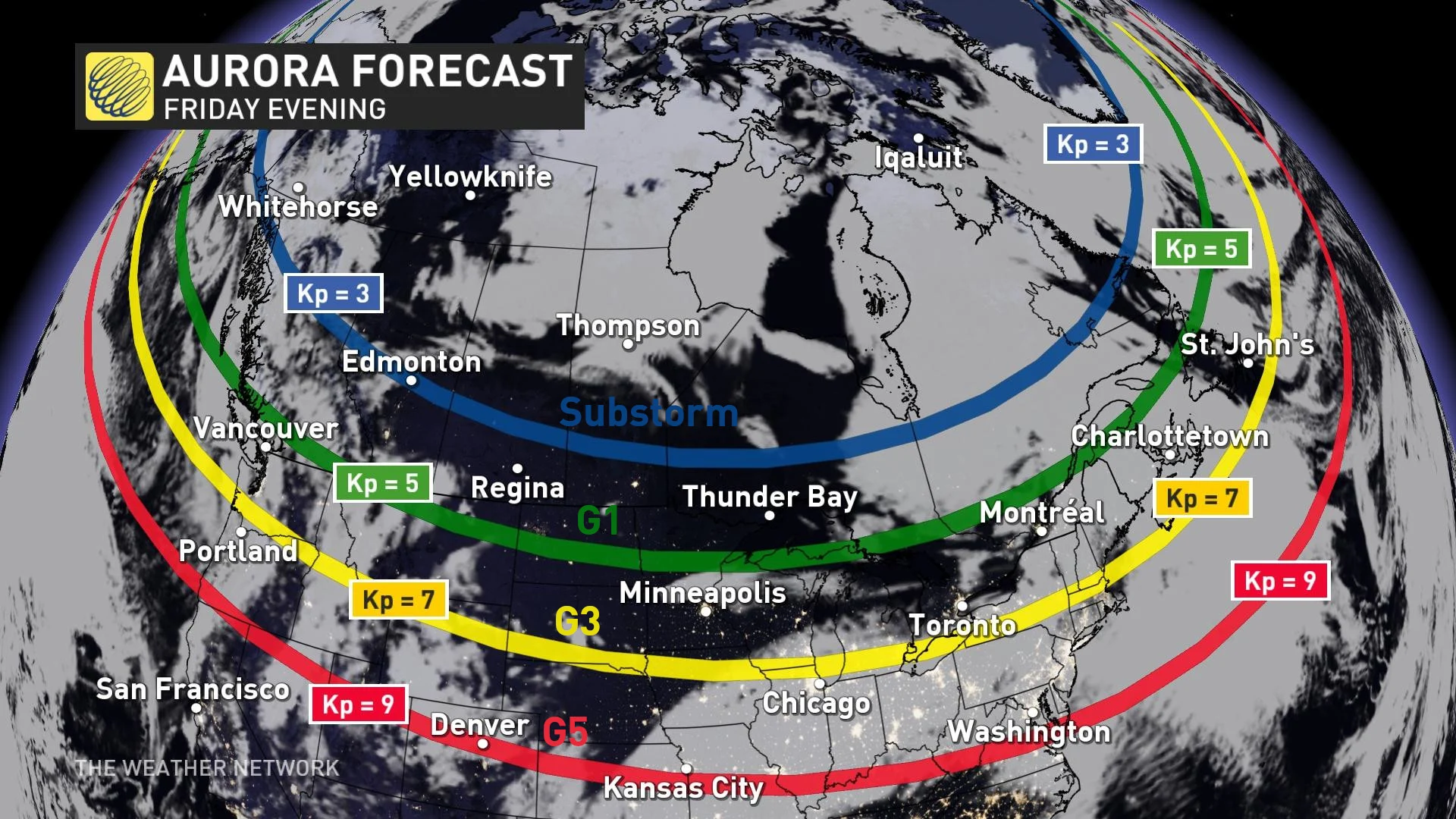
The map above shows the expected cloud cover for Friday night. The coloured bands indicate the likely southern extent of the auroras for different geomagnetic conditions. Thursday night, they reached to south of the yellow line. Based on the current forecast, they should remain above the green line for Friday night.
Check your local forecast for clear skies and stay tuned for updates!
Tips for aurora viewing
Aurora watching can be challenging.
At times they can put on spectacular displays overhead, bright enough to be clearly seen with the unaided eye. In other cases, they can hang out just near the horizon, far to the north. Many times, you can just barely notice that they're there, and it requires long-exposure photography to draw out the details.
Additionally, they can be anything but consistent, as they brighten and dim, or even appear and disappear, in the blink of an eye.
Since clear skies are essential for seeing the Northern Lights, the first thing to check before going out is your local weather forecast.
Also, even the clearest skies will likely not help if you're viewing from inside a large urban centre. City light pollution affects our night vision, and thus can easily spoil the show. The best viewing potential can be found far away from urban sprawl.
Next, be patient.
The human eye needs time to adjust to the dark. So, give yourself about 20-30 minutes away from any bright lights (including smartphone screens) to start. Looking up at the stars and planets can easily make that time go by quickly. Then, turn your eyes to the north. It's possible that the auroras may not be there at first, but if you give it some time, you could see something amazing.
Also, an excellent way to detect if there are auroras shining overhead is to use your phone camera. Since they may be too faint for your eyes to immediately pick out, the camera's sensitivity to faint colours may provide your first indication that something is going on. If you note any unusual hints of green or pink, switch the camera into Night mode, hold it steady (maybe rest it on a fence), and take a picture to see if it captures anything.
(Thumbnail image courtesy Tree Tanner, who captured this view of the auroras from central Alberta on the morning of March 23, 2023.)







